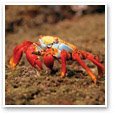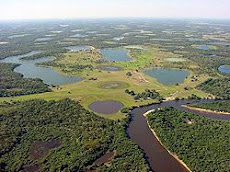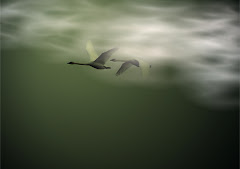 Cerro Candelaria Reserve
Cerro Candelaria ReserveCurrent size, May 2008: 2,677 hectares (6,611 acres)
Cerro Candelaria Reserve is a new, exciting World Land Trust project in Ecuador. Working with Ecuadorian organisation Fundación Ecominga, the proposed Cerro Candelaria Reserve is located in Central Ecuador on the Eastern Andes. The land purchase aims to create a protected corridor between two existing National Parks, preserving a large tract of virgin forest, which contains a unique diversity of endemic orchids. Fundación Ecominga is also purchasing and protecting two other reserves, which will form the northern part of this corridor, in partnership with World Land Trust-US.
Cerro Candelaria
Cerro Candelaria is:
Situated within the transition zone between the Andes and the Amazon;
Located within the Upper Pastaza Watershed, in the province of Tungurahua, Ecuador;
2113 hectares in size, consisting of primary Cloud Forest and Paramo (tropical alpine grasslands);
Bordering Sangay National Park and extends the protected area north (towards Los Lianganates National Park);
A rich centre for plant endemism;
A unique location for orchids, including new species of the orchid genus Teagueia;
Home to other rare and poorly known orchid species including some as-yet undescribed Platysteke species (world's smallest orchid);
Home to a wide range of mammals including: Spectacled Bear and Mountain Tapir.
Sobralia luerorum - an orchid commonly found in the lower parts of Cerro Candelaria. Photo © Lou Jost/EcoMinga
Limited infrastructure is planned for this reserve, with future project activities including development of a trail and basic cabins. The neighbouring community have shown support for this project and some adjacent landowners have started planting 'bird pastures' (hillsides covered with trees for nectar feeding birds and fruit eating tanagers) to attract birds, and also in order to show visitors the wildlife of the area.
Teagueia Orchids
Over the last few years, one of the most spectacular plant radiations in South America has been uncovered at Cerro Candelaria: an explosion of speciation in the Teagueia orchid genus. Originally only six species of this genus were known world wide, however 28 new species to science have been discovered on four neighbouring mountains in the Upper Pastaza Watershed, with 16 species found within the proposed reserve, growing at elevations ranging between 3100 - 3800m. DNA analysis (from Kew Botanical Gardens and Ohio State University) shows that all these new species have evolved locally, and are not closely related to the existing species in the genus. This species radiation is thought to be the densest and richest localised occurrence in South America and far more dramatic than the famous species radiations Darwin discovered in the Galapagos Islands.

















